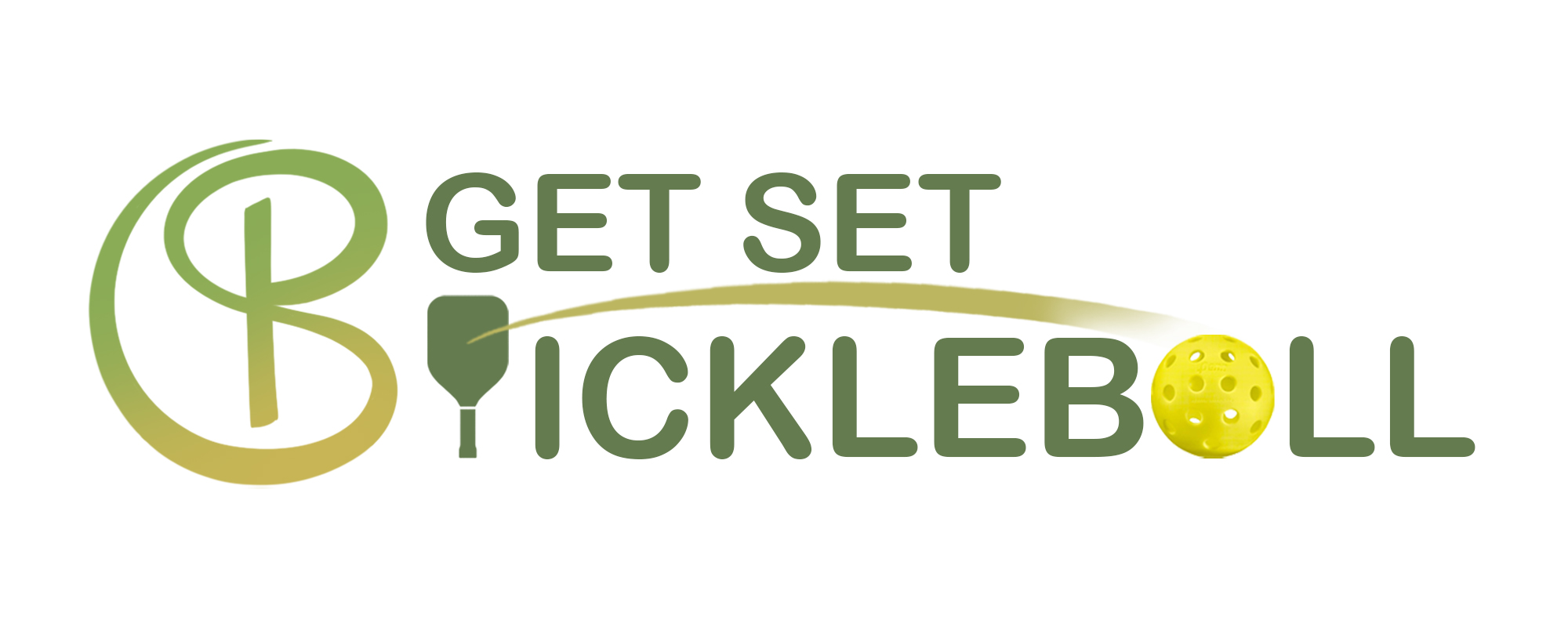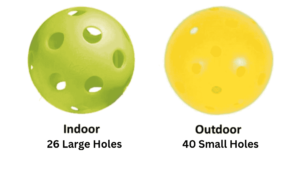Introduction:
I often had this question when I started to play pickleball at the age of 5 and observed the pickleball ball more closely. I am sure that you also have it too. I would like to share my learnings with all of you in this article to answer your question.
These tiny balls can do magic on the courts due to their holes, sizes, colors, and precision! The main difference comes into picture how this ball reacts during flight, especially in the different conditions of indoor and outdoor.
From the number of holes and durability to their historical origin, getsetpickleball.com has covered everything about balls in this article. Let’s move ahead in the article to learn more about holes.

Where Did Balls With Holes Originate From? (Wiffleball)
In 1953, David N. Mullany invited the curveball “Wiffleball” for his 12 year old son at his home in Fairfield, Connecticut. Due to holes this ball could easily be curved in air after its thrown as aerodynamics comes into picture. A Wiffle ball is a hollow, resilient plastic, lightweight ball. Its size is similar to baseball. This half-perforated ball has 0.75-inch oblong holes on one side and the other part is non-perforated.
In 1965, Joel Pritchard and Bill Bell created a recreational sport Pritchard’s backyard court at Bainbridge Island, WA) to let go of boredom of their children during sunny days. They took ping pong paddles and perforated Wiffle ball things that were only available and started to play a new game on a badminton court with a low-height net. This game was named ‘pickleball’ and got so much popularity in less time in the USA.
In 1984, USAPA was established. Since then, The USAPA and IFP have set specific standards for ball specifications. In 1992, pickle-Ball, Inc. started manufacturing in-house ball with a customized drill machine. They crafted balls with small and larger holes. But, what was the reason behind creating such balls with different holes? Let’s read further.
Why Does Pickleball Have Holes?
As a pickler, you should learn about indoor and outdoor balls, their features, and their effects to select the most suitable ball. We have summarized the basic reasons behind these holes in ball below:
Outdoor Pickleball:
Outdoor balls are designed to withstand external environmental factors during the game, such as heavy wind, humidity, rain, and temperature changes.
These balls having smaller hole diameters give proper flight in the air which helps players to hit the ball easily.
The holes also help to reduce air resistance, allowing the ball to travel faster and farther.
Their 40 holes lessen air resistance and enhance speed for faster delivery to the opposite side of the court.
Additionally, there is the effect of spin on the ball during the flight. With heavy spin, the ball tends to curve more in the air in outdoor court.
Indoor Pickleball:
As the environment of indoor court is within control the Indoor balls are comparatively softer, slower, and bounces more. They are designed for a precise movement for short distances, especially in the indoor pickleball courts.
These balls have larger hole diameters that impart a study and stable flight after striking and it helps the players to serve with lesser energy than outdoor balls.
These balls may have air resistance due to larger 26 holes and they lower the ball’s velocity. Balls’ slow speed in the indoor courts makes this game more competitive.
How Many Holes Does Pickleball Have?
Indoor Pickleball has 26 wide holes and outdoor Pickleball has 40 small holes.
These holes determine the ball’s flight, speed, stability, and precise placement after striking.
Benefits Of Holes In Pickleball:
Indoor and Outdoor ball holes has significant benefits on ball speed, noise, trajectory, etc., such as follows:
- Bounce:
The outdoor balls bounce lower than indoor balls. Wide holes in indoor ball allow more agility and impart more popping character as compared to outdoor balls. The ball’s bounce and traction can also differ according to the player’s serving skills, the types of shots used, and the strategies implemented. - Speed:
Outdoor balls have high speed and large air resistance due to their large number of small hole diameters. Indoor balls have slow speed and less air resistance due to their fewer holes with wide hole diameters. Outdoor balls are harder to control than indoor pickleballs. - Sound:
Outdoor ball creates more noise than indoor ball holes. The bounce is low and players need to hit the outdoor ball harder than indoor ball. Such hard-hitting balls also create more sound when they bounce on the court. As a result, the indoor balls create less noise.
Larger holes are more prone to get affected with the winds so to minimize the effect of wind outdoor balls have smaller holes.
Importance Of Hole Diameter:
Indoor ball holes have a 40% larger diameter than outdoor ball holes. Outdoor balls with smaller holes create more precise flight than indoor pickleballs. These balls show higher durability and hardness on outdoor courts due to higher holes.
Knowing this information now, I am sure you can perform strategic shots with greater spin, grip, and control over the ball. With consistent practice, you can determine the specific flight path with accurate air movement for the ball for a hard hit.
To Sum Up With:
The pickleballs are meant for ideal flight, accurate trajectory, and speed to serve difficult shots for competitive play. As discussed above, both pickleballs differ in the number of holes, hole diameter, durability, and hardness. Pickleballs can show varying performances according to factors such as winds, noise, heat, etc.
getsetpickleball.com hopes that this guide on ‘Why pickleball has holes?’ has given you a brief idea about pickleball types, holes, and hole diameters. Whether you use an indoor or outdoor pickleball, you must be aware of the number of holes and the reason behind these holes in each kind of ball. Select the ideal ball with the right holes and play like a pro!
Frequenty Asked Questions
-
Do pickleball holes affect its durability and performance?
Yes, the pickleball holes affect the durability and performance. Outdoor pickleball are more durable than indoor pickleball as they have more holes and hard plastic material. Indoor pickleball has soft plastic. -
Can I use indoor pickleball in an outdoor court?
You can use indoor pickleball on an outdoor court for recreational games. But, you should use separate pickleball for indoor and outdoor games for legal tournaments and official leagues. A suitable pickleball on the right court can drastically improve your game and serving style. -
Why should a ball be USAPA-approved in pickleball?
A USAPA-approved pickleball assures the standard features, number of holes, hole diameter, durability, manufacturing quality, etc. It means the ball is tried, tested, and ready to use in official pickleball tournaments.







0 Comments